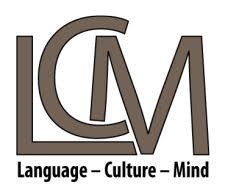Feeling, thinking and lingua-cultural diversity: on ethno-theories of "emotions"
Presumably there is a recognizable set of feelings called “emotions” common to mammalian species. “What separates humans from other mammals is that humans can conceptualise feelings and use them to create and maintain culture and represent them symbolically using language to denote and label them (Shields 2002: 5). There is variation, however, in how humans think about and label feelings. In this talk I survey the different dimensions of this variation through different linguacultural ethno-theories about feelings. I argue that different organizing principles are employed in categorizing feelings. Thus WEIRD groups segregate and categorize feelings into “emotions”, “sensations”, “intuition” and “cognition”, “perception” and “disposition” etc. . Other linguacultures, e.g. West African linguacultures, integrate all bodily and cognitively based feelings into one category. Moreover, some linguacultures do not have a label for the domain of feelings, e.g., the Dagbani (West Africa) or the Ifaluk (Lutz 1988). These factors have implications for the understanding and analysis of the diversity of ways in which humans talk about feelings. I undertake a comparative conceptual analysis of “feelings talk” involving the “heart” in Ewe (Kwa), Polish (Slavic) and Germanic languages to show that such talk involves different semiotic projections of the body which are not just metaphorical figurations.
Keywords: “emotions” heart expressions, semiosis, ethno-theories of feelings, linguacultural diversity Ewe, Germanic,
Lutz, Catherine A. 1988. Unnatural emotions: Everyday sentiments on a Micronesian atoll and their challenge to Western theory. University of Chicago Press.
.Shields, Stephanie A. 2002. Speaking from the heart: Gender and the social meaning of emotion. Cambridge University Press,.
